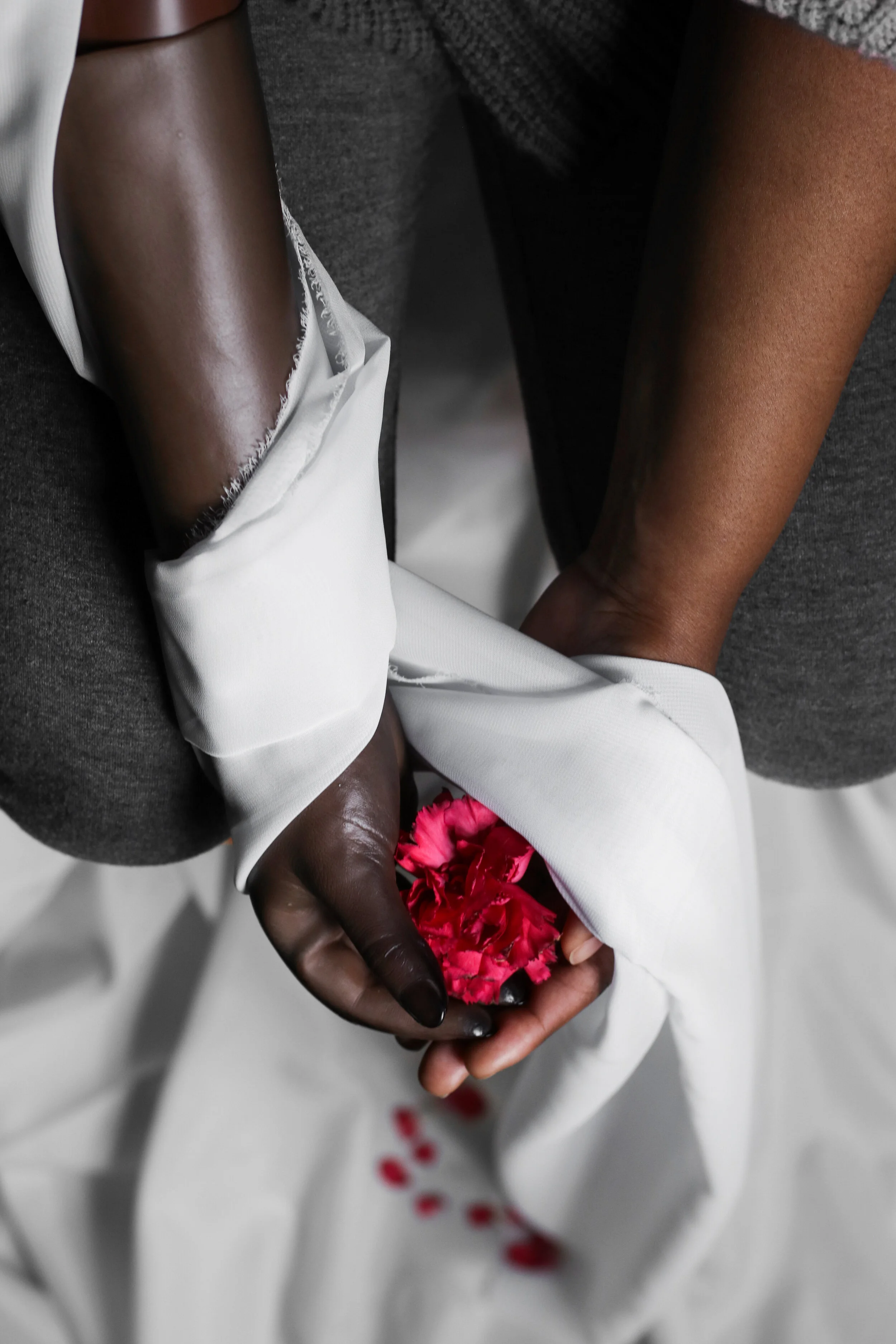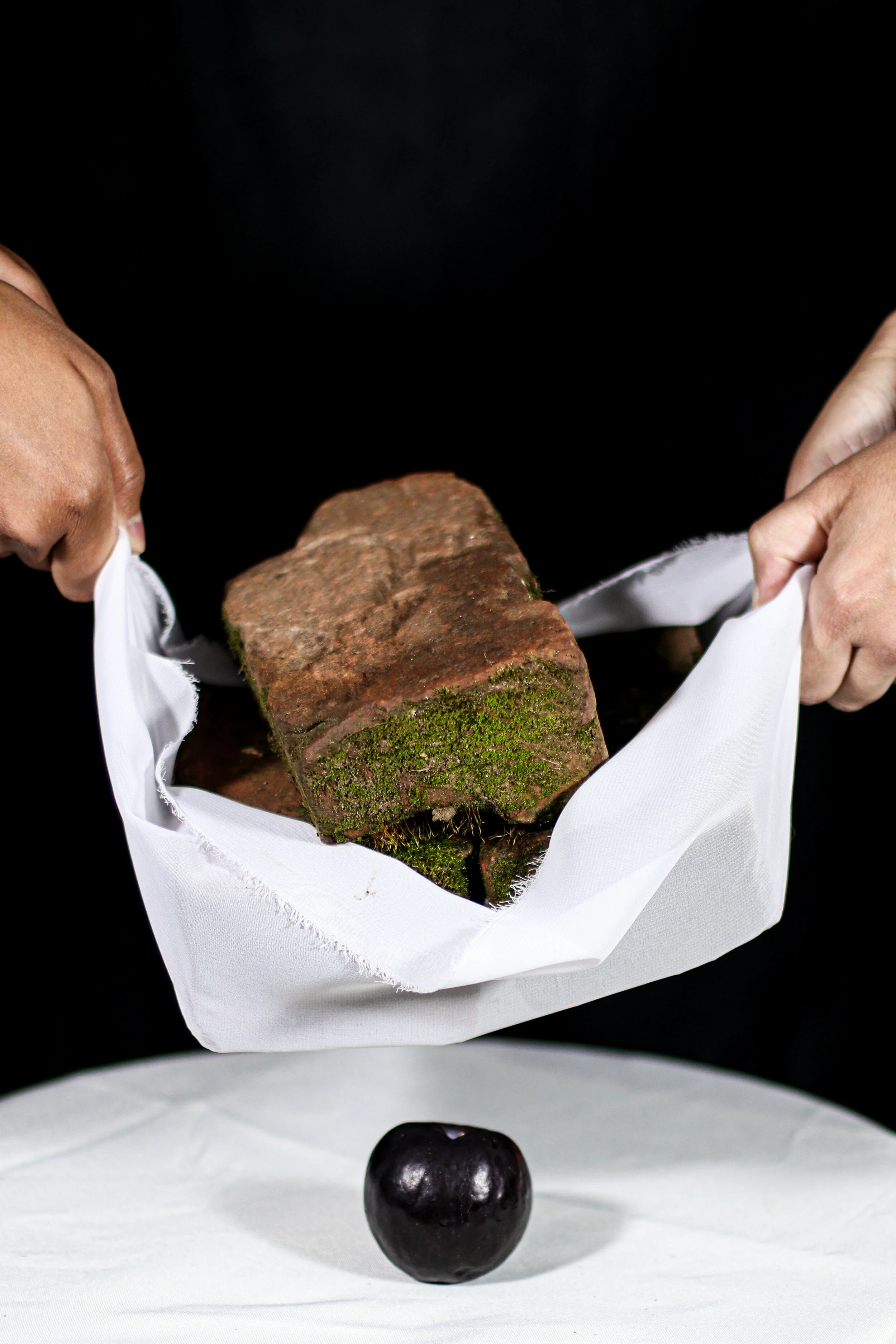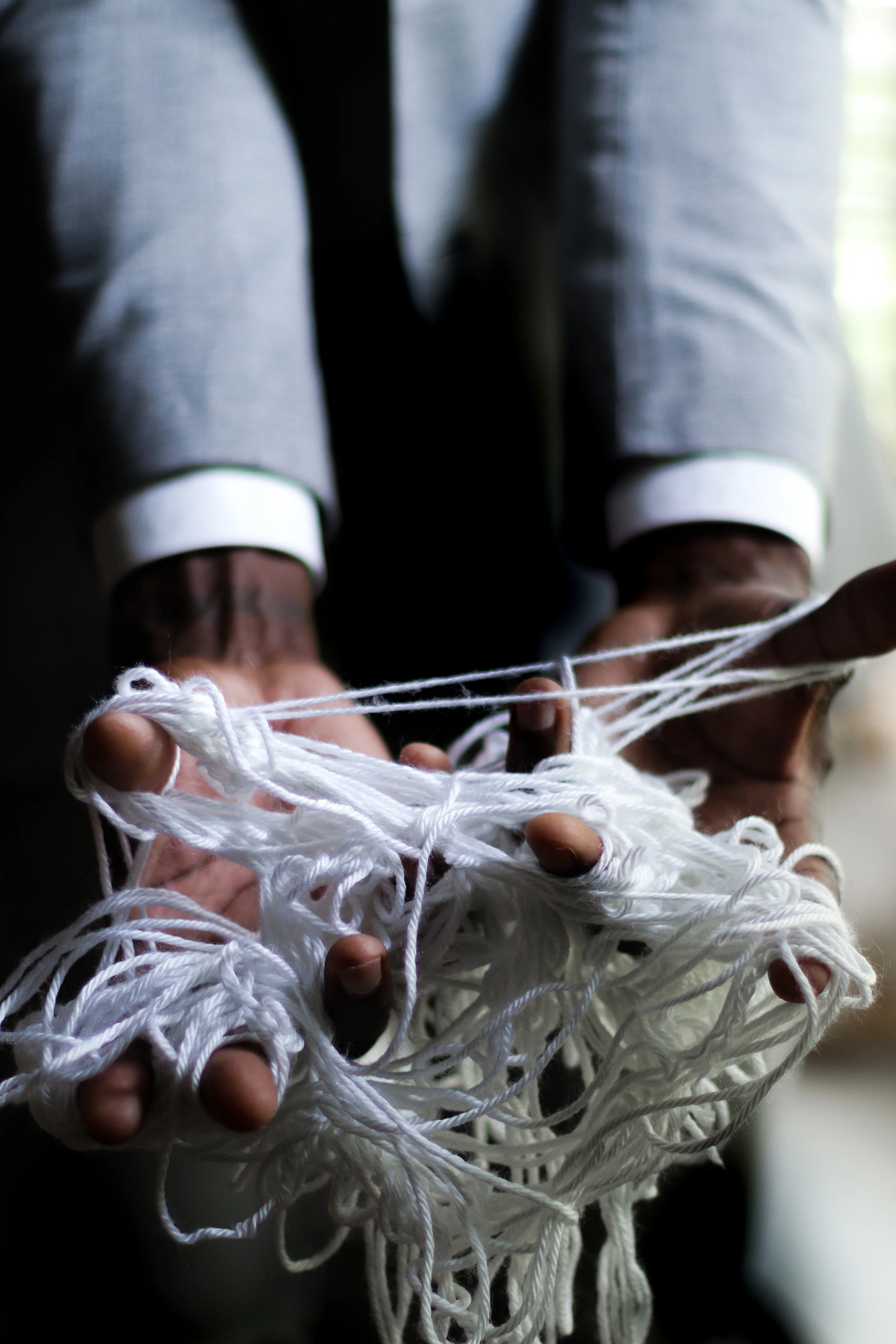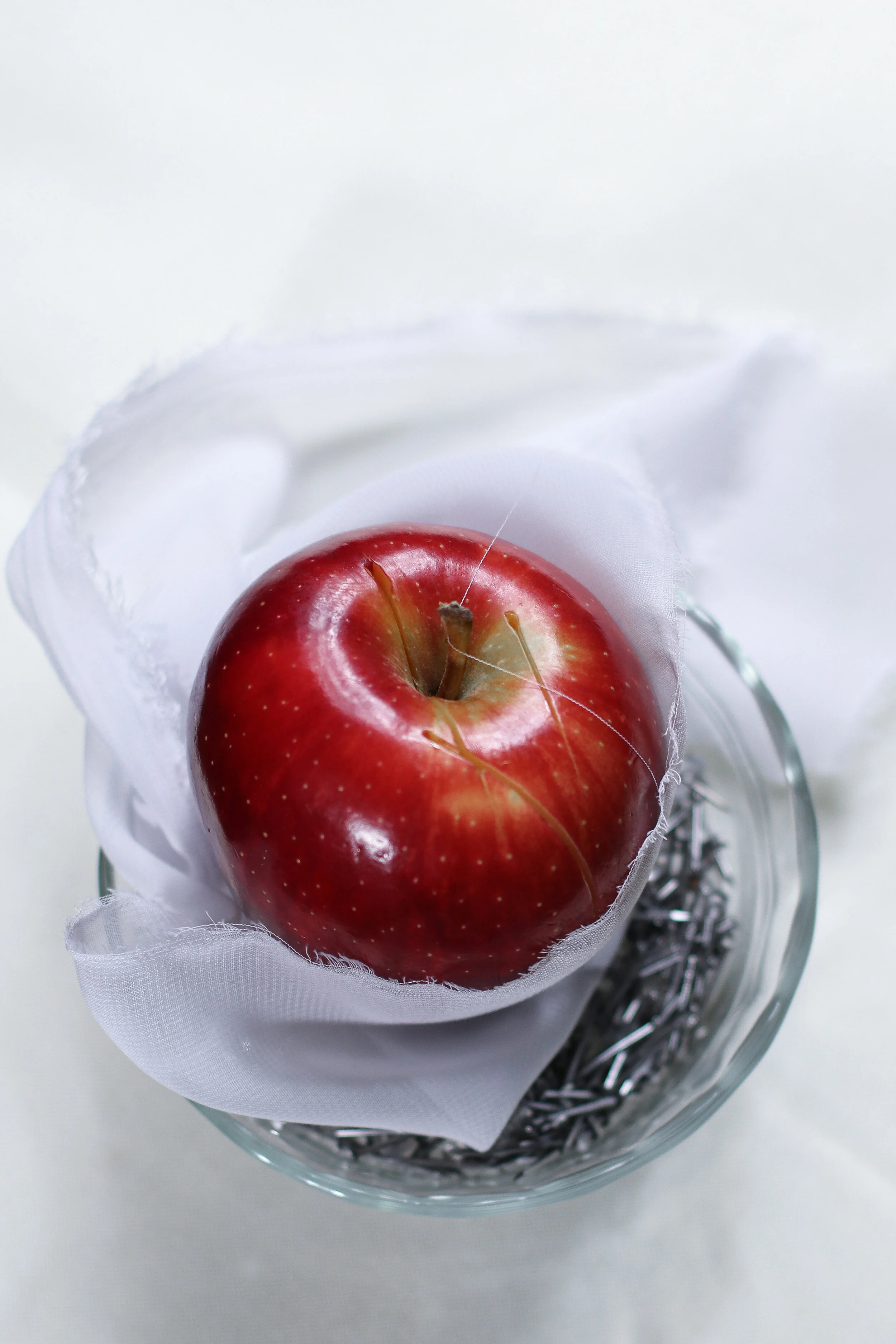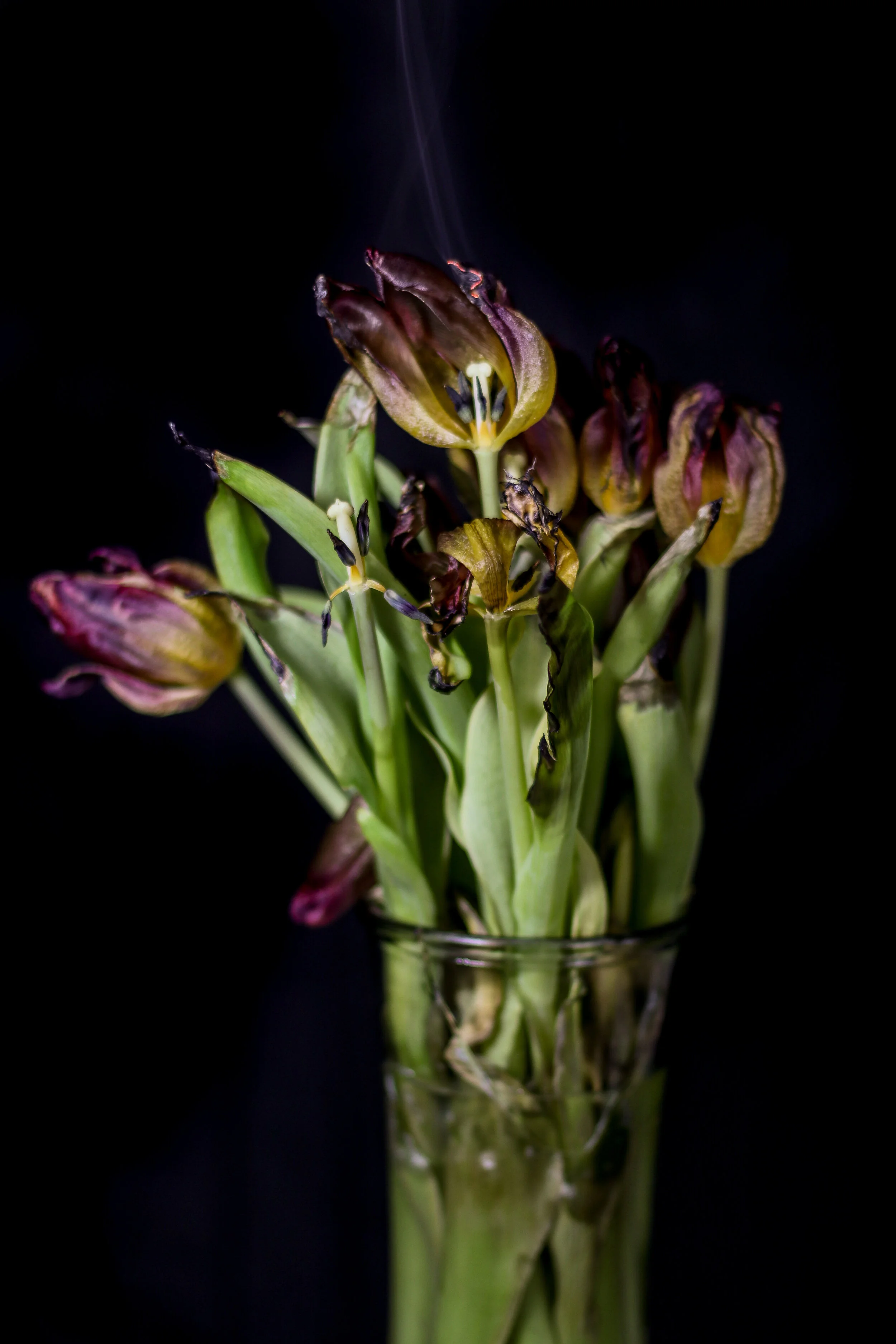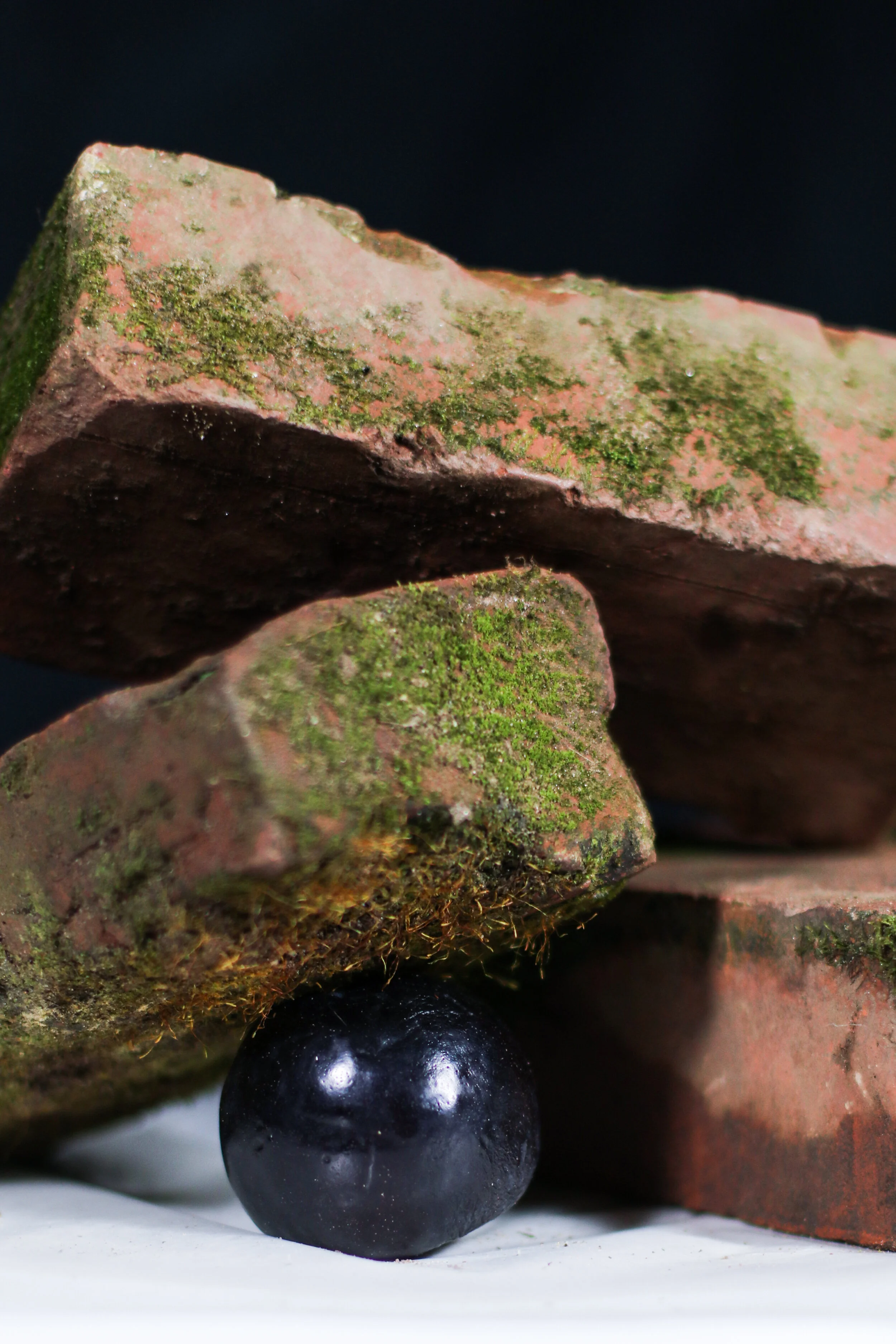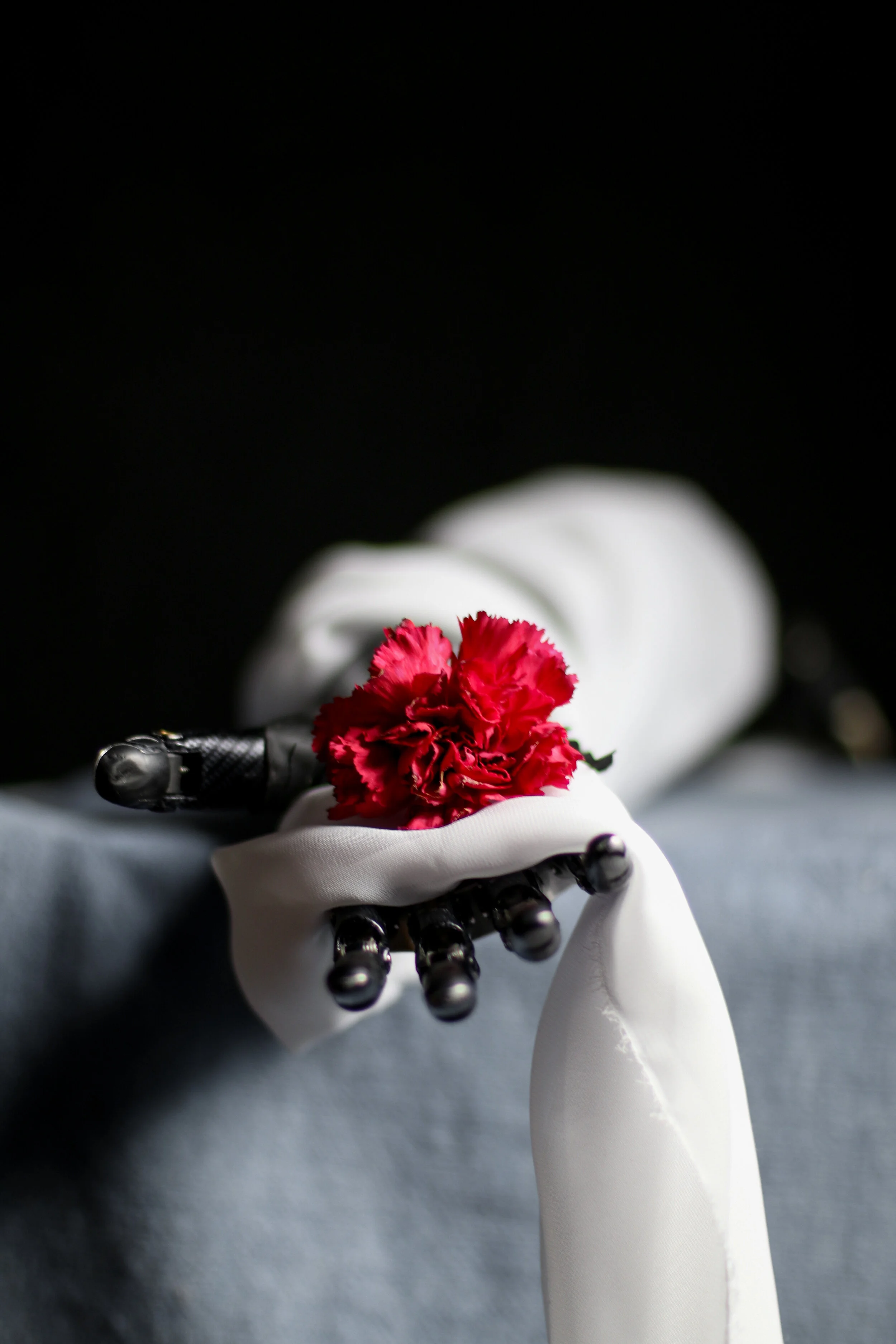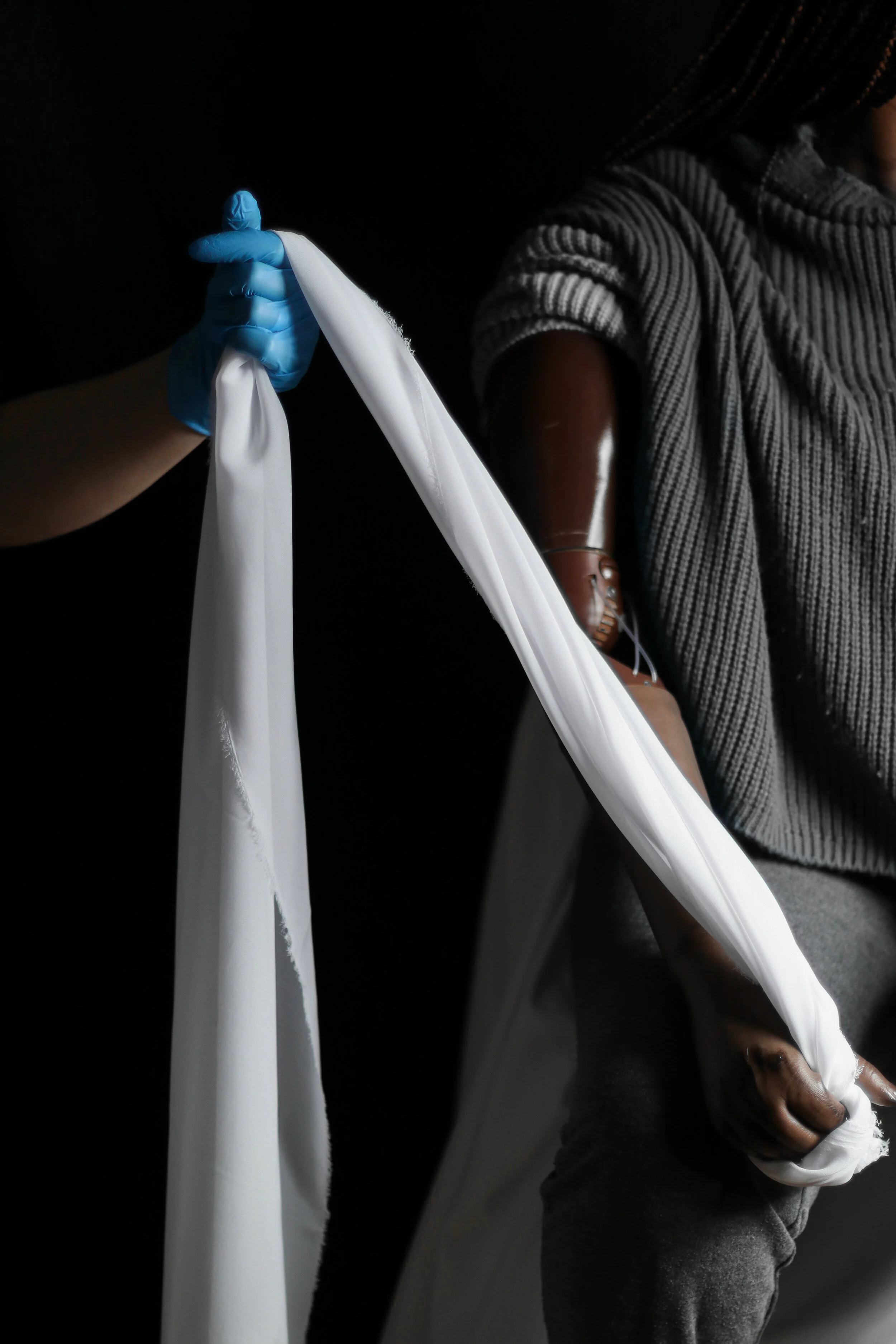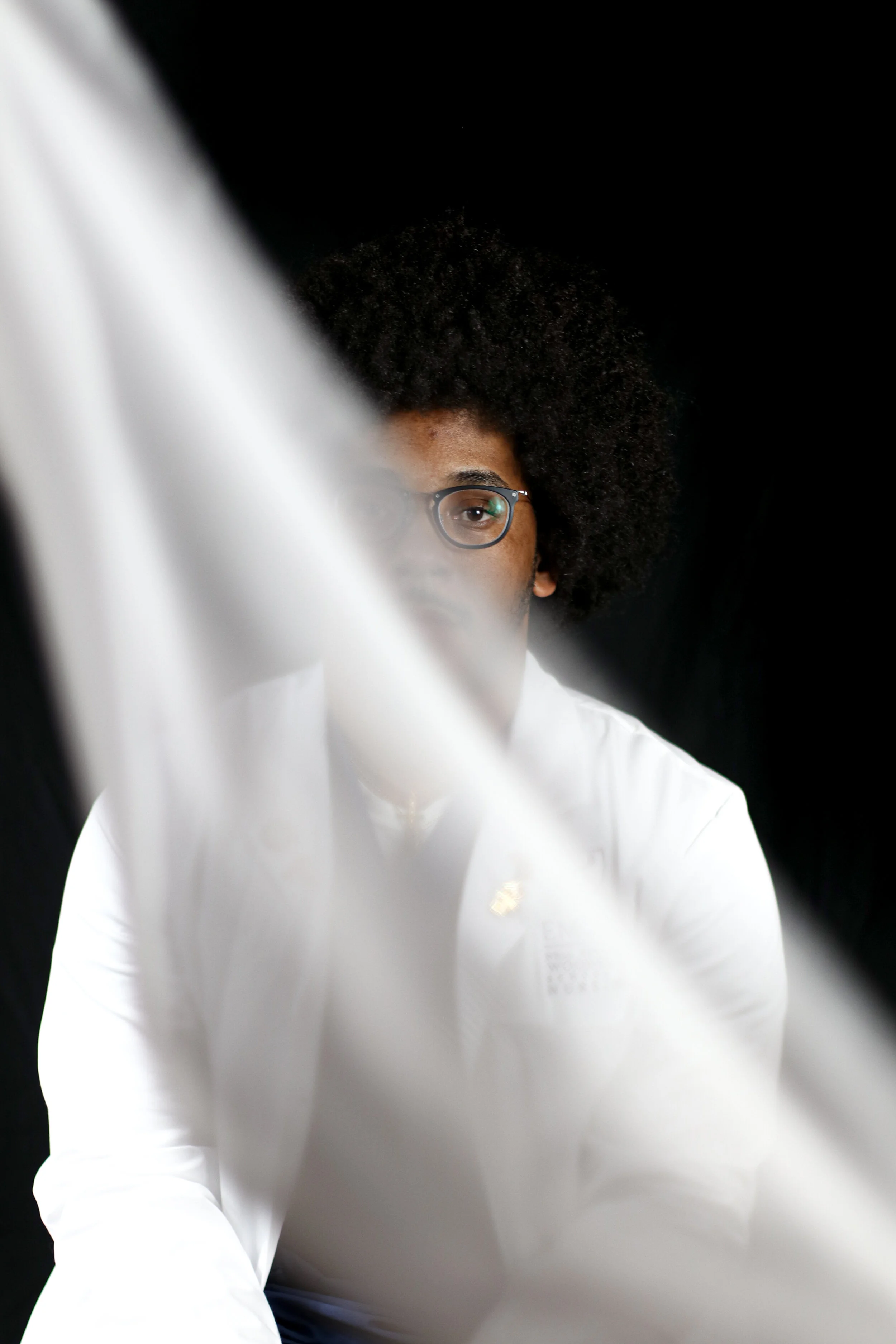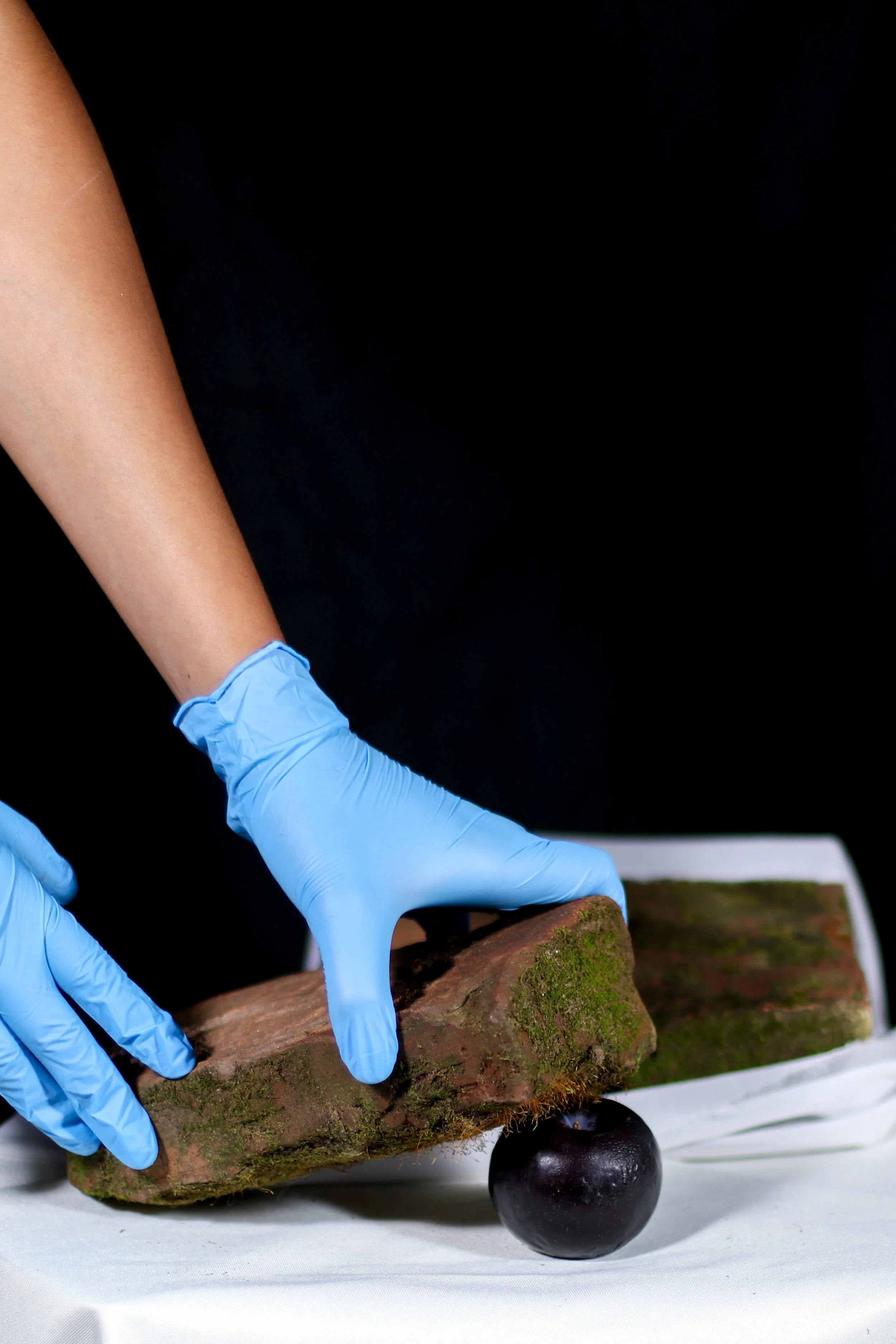The Hands That Feed
This series explores the innate sense of mistrust felt by people of color that has been passed down through intergenerational trauma and lived experiences. The frames in this project were developed through collaboration between the photographer and participants. These contributors answered a brief set of questions that helped define their experience and feelings around mistrust as persons of color. The answers they gave helped direct creative frames that aimed to evoke a similar emotion that aligned with their experience. The theme of this project is perpetually relevant, but its impacts have been highlighted in the time of COVID-19. This pivotal moment in time calls on systems to acknowledge past and present racist undertones engrained in American culture.
The disproportionate impacts of the COVID-19 pandemic and vaccine hesitancy in communities of color have highlighted the deep-seated inequities and institutional distrust felt by Black Indigenous multi-racial people of color. Why are people of color so distrustful of the American medical institutions? The Tuskegee Study of Untreated Syphilis in the Negro Male in which federally funded investigators withheld available treatment from African American men with syphilis is the most cited reason for medical mistrust in communities of color. However, there is much more to institutional mistrust than Tuskegee. People bring the social contexts of their lives into the medical encounter. Research points to patterns of negative interactions with institutions as the driver of mistrust. These interactions transcend interactions within medical institutions. This project aimed to utilize personal interviews and photos to explore and display the innate sense of distrust felt by persons of color passed down through lived experiences.
The United States has a long history of abusing people of color, specifically in healthcare, from the very beginnings of the slave trade. In the book Medical Apartheid, Harriet Washington describes a sobering comprehensive history of the abuse of experimentation on people of color. John Brown, a slave in the early 19th century, explains how his master lent him to a physician who conducted experiments on him like trying to find the best remedies for sunstroke. The doctor did this by making him sit in a bottomless fire pit covered with a wet blanket so that only his head stuck out. He then administered various heat remedies until Brown passed out. He would be revived and made to repeat the ordeal the following day.
US congress banned the importation of African-Born slaves in 1808. This brought the slave-based nation to a state of disarray, having to figure out who would do the work of the slaves once they died off. If slaves could no longer be imported, how would industry continue? Since the status enslaved infants were tied solely to their mother, a child born to a slave woman became her owner's property; this prompted slave owners and medical doctors to start to work hard to protect the reproductive health of their Slave women. Doctors like J Marion Sims learned about and perfected procedures on Black slave women who could not consent due to their status as property. One of his most well-known "achievements" was his discovery for the cure of vesicovaginal fistula—a devastating complication of prolonged labor. He did this with repeated surgeries on three slave women - Lucy, Anarcha, and Betsey. He performed over 30 surgeries on Anarcha alone. Although anesthesia was not widely available at the time, there were other forms of pain relief that he chose not to administer to the women. This and other atrocities were done to women in the name of furthering science and breeding more slaves.
When Slavery was finally outlawed in the United States, Black women and their reproduction were now looked at as a burden to society. The Eugenics movement believed that society would be improved by increased breeding of pure White people who were assumed to have high IQs and were superior to the "impure." Anyone who didn't fit this idea of racial perfection, including most immigrants, Blacks, Indigenous people, poor whites, and people with disabilities, became targets of eugenics programs. More than 60,000 people were sterilized in 32 states during the 20th century, many of whom did not consent. Today, we still see the effects of the eugenics movement where women of color are coerced into sterilization procedures while in the custody of Immigration and Customs Enforcement.
“Distrust is primarily unseen; I think that’s a huge issue for how to overcome it. Early in life, I didn't even know at times that the system was built against me, or where my distrust came from. Now, I know a lot of it stems from across generations.”
- David Denton
In a study conducted in 2016 cohorts of laypeople, medical students, and residents were surveyed regarding beliefs about biological racial differences and how those beliefs translated to pain perceptions and treatment recommendations for Black people. As many as 50% of medical students and residents still endorsed views like Black people have thicker skin, have blood that coagulates quicker, have a more efficient respiratory system, a more robust immune system, and have higher fertility than white individuals. It goes further to say that keeping these false beliefs is associated with the perception that Black people feel less pain than white people and are also associated with inadequate treatment recommendations for Black patients' pain.
Much of medical science, especially in the United States was developed using the bodies of people of color. However, people of color have never been the ultimate beneficiaries of such knowledge. J. Marion Sims learned how to cure fistulas as well as created the Sims speculum by degrading Black bodies, yet Black and Brown women in the USA have the worst morbidity and mortality rates in the United States. Black and Brown parents have been coerced into allowing their children to take part in experiments under the guise of examining "the physical and emotional well-being of children," while researchers were truly seeking biological and environmental predictors of "antisocial behavior," "aggression," and "delinquency." In essence, looking for indicators of being "born a criminal." These examples show that historically, the medical institution has held ulterior motives to the detriment of unsuspecting Black and Brown people.
A 2021 study looked at how negative experiences with institutions, such as the criminal justice system, might decrease trust in other institutions, like the health care system. They found that people who had negative encounters with the police had higher levels of mistrust compared with those who had no negative police encounters. Historical and present-day policing is used as a practice to control Black and Brown bodies. When Slavery was abolished, there was a need to figure out how to keep control of the Black bodies that supplied free labor. First came the creation of the Black Codes and Jim Crow Laws, a code of laws adopted by southern states that limited the rights of Black people. Then came the vagrancy laws, making it a crime to be unemployed. This set the path for the convict lease system, which allowed jails to lease convicts to plantation owners and industrialists for free labor. A version of this system still operates today.
This Slavery by another name, set up the need to continue to control Black and Brown bodies to keep the prison systems full. This was enabled by President Lyndon B. Johnson's War on Crime, President Ronald Reagan Anti-Drug Abuse Act, which enacted mandatory minimum sentences, and President Bill Clintons Three Strikes Law and Stop and Frisk Laws, which allowed police officers to stop, interrogate and search New York City citizens on the sole basis of ‘reasonable suspicion.’ This led to targeting Black-led organizations such as The Black Panther Party, in the 1960s and 70s, and is still prevalent today with backlash against Black Lives Matter. There are more Black people under the control of the criminal justice system today than were enslaved in 1850.


